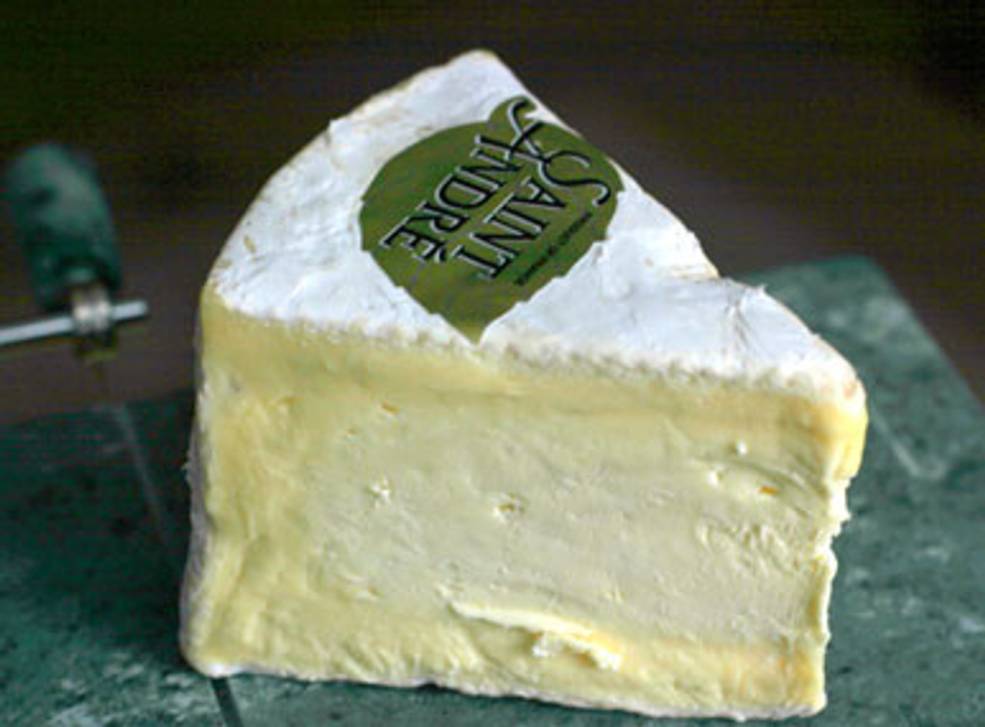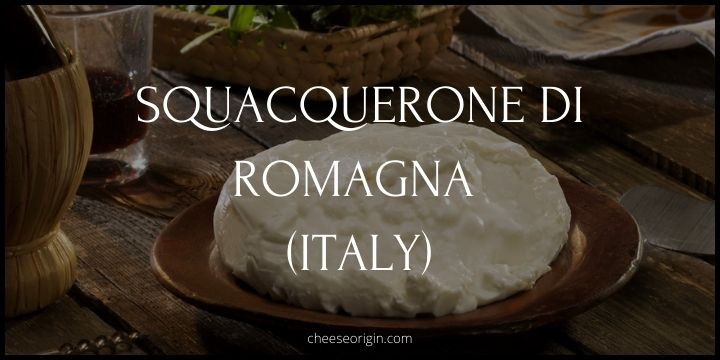What is Saint Andre? A Decadent Delight from Normandy

Welcome to the world of Saint Andre, a luxuriously creamy and decadent cheese hailing from the picturesque region of Normandy, France. Known for its rich and buttery flavor, this triple cream cheese is a true culinary delight. With a velvety texture that melts in your mouth and a mild tangy taste, Saint Andre is more than just a cheese – it’s an indulgent experience that transports you to the lush green pastures of Normandy with each bite.
Quick Facts About Saint Andre
| Quick Facts | Details |
|---|---|
| Origin | Normandy, France |
| Milk Type | Cow’s milk |
| Texture | Creamy, dense |
| Flavor Profile | Mildly sweet, slight tang, nutty undertones |
| Fat Content | Approximately 75% butterfat, classifying it as a ‘triple cream’ cheese |
| Rind | Edible, soft, similar to Brie or Camembert |
| Pairings | Crisp, dry white wine or sparkling wine; acidic fruits like apples and pears |
| Serving Suggestions | Ideal for cheese boards, sandwiches, or as a dessert cheese |
| Shelf Life | Consume within a few weeks of purchase for the best flavor |
| Storage | Keep refrigerated, tightly wrapped |
| Aroma | Buttery, rich |
| Color | Pale yellow with a white rind |
| History | Developed in the mid-20th century in Normandy, France |
| Nutritional Value | High in protein and calcium, but also high in fat and calories due to its rich nature |
| Availability | Widely available in cheese shops, grocery stores, and online |
| Best Season to Buy | Available year-round, but traditionally made in Spring and Summer |
| Cultural Significance | Synonymous with French gastronomic luxury |
| Awards | Has won numerous awards at international cheese competitions |
What is Saint Andre?

Saint André is a true gem in the world of cheese. Born in the pastoral landscapes of Normandy, France, this cheese is a testament to the region’s rich dairy heritage. It’s a triple cream cheese, which means it boasts a butterfat content of around 75%. That’s right – this is not a cheese for the faint-hearted! Each bite of Saint André is like a decadent dollop of cream that melts on your tongue.
But it’s not just about the creaminess. The flavor profile of Saint André is a delightful blend of mild sweetness, a gentle tang, and subtle hints of nuttiness. It’s a symphony of flavors that dance harmoniously on the palate, making each mouthful a luxurious experience. The rind of this cheese is soft and edible, much like Brie or Camembert, adding another layer of complexity to its taste.
Saint André pairs beautifully with a crisp, dry white wine or a lively sparkling wine. Its richness also makes it a great companion to tart fruits like apples and pears. Despite its opulent nature, Saint André isn’t overpowering. This balance of richness and subtlety is what makes it such a beloved choice among cheese connoisseurs.
Whether you’re putting together an elegant cheese board, crafting a gourmet sandwich, or simply indulging in a little treat, Saint André is a cheese that promises to elevate your culinary experience. It’s a little piece of French gastronomic luxury that you can savor anytime, anywhere.
In essence, Saint André is more than just a cheese. It’s a celebration of the art of cheesemaking, a tribute to the beauty of Normandy, and a testament to the pleasure of indulgence. It’s a cheese that invites you to sit back, relax, and lose yourself in its creamy, dreamy goodness.
What Does Saint Andre Taste Like?
Saint André is a triple cream cheese, which means it has an incredibly rich and buttery flavor. The cheese is often described as tasting like a heavenly blend of heavy cream and salted butter.
In addition to its creamy core, Saint André has a slight tang that gives it a bit of zest. There are also subtle undertones of nuttiness that add depth to its overall flavor profile. Despite its richness, the cheese retains a certain lightness, delivering a well-balanced palate that’s not overly intense.
The rind of Saint André cheese is edible and adds another dimension to its taste. It’s slightly moldy and imparts a faint earthiness that beautifully complements the creamy interior.
Saint Andre Tasting Notes
- Texture: Dense and creamy, similar to butter, with an edible soft rind.
- Flavor: Rich and buttery core with a slight tanginess and subtle nutty undertones.
- Aroma: Has a mild, buttery scent.
- Color: Pale yellow interior with a white, bloomy rind.
- Aftertaste: Leaves a lingering creamy taste with a hint of saltiness.
- Pairings: Pairs well with crisp, dry white wine or sparkling wine. Also complements acidic fruits like apples and pears.
What is the Difference Between Saint Andre and Brie?
| Saint André | Brie | |
|---|---|---|
| Origin | Originates from Normandy, France. | Originates from Brie, France. |
| Texture | Extremely creamy and buttery with a dense texture. | Creamy but firmer than Saint André, with a more velvety texture. |
| Fat Content | A triple cream cheese with about 75% butterfat content. | A double cream cheese with a butterfat content of around 60-75%. |
| Flavor | Rich, buttery flavor with a slight tanginess and subtle nutty undertones. | Mild, nutty flavor with a hint of mushroom and a slight tanginess. |
| Rind | Edible, soft white rind that adds a faint earthiness to the taste. | Edible, bloomy rind that imparts a slight earthy flavor. |
| Pairings | Pairs well with crisp, dry white wine or sparkling wine. Complements acidic fruits like apples and pears. | Pairs well with light red wines like Beaujolais, or fruity white wines. Also complements berries and nuts. |
| Serving Suggestions | Ideal for cheese boards, sandwiches, or as a dessert cheese. | Commonly used in cooking, on cheese boards, or served at room temperature as a dessert cheese. |
| Storage | Should be kept refrigerated and tightly wrapped to maintain freshness. | Best stored in the refrigerator and allowed to come to room temperature before serving. |
>> Click here to read our in-depth guide on Brie
10 Best Saint Andre Substitutes
| Substitute | Description |
|---|---|
| Brie | Similar in texture and flavor, Brie can be a good substitute for Saint André. It has a creamy texture and mild, nutty flavor. |
| Camembert | A bloomy-rind cheese like Saint André, Camembert is slightly less creamy but still offers a similar flavor profile. |
| Crème fraîche | If you’re using Saint André in a recipe, crème fraîche can replicate its rich, creamy texture. However, it’s less flavorful than the cheese. |
| Mascarpone | This Italian cream cheese is buttery and smooth, making it a good substitute for Saint André in recipes that require a creamy texture. |
| Triple Crème Brillat-Savarin | A triple cream cheese like Saint André, Brillat-Savarin offers a similar rich, creamy taste and texture. |
| Coulommiers | A relative of Brie, Coulommiers is less creamy than Saint André but shares a similar mild flavor and can be used as a substitute in many dishes. |
| Cream Cheese | In recipes where Saint André is blended or melted, cream cheese can provide a similar creamy texture. It has a milder flavor. |
| Neufchâtel | Neufchâtel has a similar texture to Saint André, but with a lighter, more tangy flavor. Can be used as a substitute in some recipes. |
| Robiola | An Italian soft-ripened cheese, Robiola has a creamy texture and a flavor that balances between sweet and tangy, making it a decent substitute. |
| Chaource | This French cheese has a similar texture to Saint André and a slightly more intense flavor, making it a good substitute in certain dishes. |
What Pairs Well With Saint Andre?

Food that goes well with Saint Andre:
| Category | Food that pairs well with Saint Andre |
|---|---|
| Fruits | Apples, Pears, Grapes, and Berries. |
| Bread/Crackers | French Baguette, Sourdough, Multigrain Crackers, and Artisan Breads. |
| Charcuterie | Prosciutto, Salami, and other cured meats. |
| Nuts | Almonds, Walnuts, and Pecans. |
| Condiments | Fig Jam, Honey, and Dijon Mustard. |
| Vegetables | Olives, Pickles, and Roasted Red Peppers. |
| Desserts | Dark Chocolate, Fruit Tarts, and Pastries. |
Also read: What Fruit Goes on a Charcuterie Board?
Beverage that goes well with Saint Andre:
| Category | Beverage that pairs well with Saint Andre |
|---|---|
| White Wine | Chardonnay, Sauvignon Blanc, and Champagne. |
| Red Wine | Pinot Noir, Cabernet Sauvignon, and Merlot. |
| Beer | Belgian Ales, Wheat Beer, and Craft IPA. |
| Non-Alcoholic | Sparkling Water, Apple Cider, and Grape Juice. |
| Spirits | Brandy, Whiskey, and Port Wine. |
Also read: Best Wine and Cheese Pairings: The Ultimate Guide
Frequently Asked Questions
1. Can I eat the rind of Saint Andre cheese?
Yes, you can eat the rind of Saint Andre cheese. The rind is edible and is covered with a white powdery mold that gives it a tangy flavor. Some even find this part of the cheese to be their favorite due to its rich and slightly salty taste.
However, it’s important to note that if the rind has pinkish or orange colorations, it might be of inferior quality.
2. Is Saint Andre a strong cheese?
Saint Andre cheese is not considered a strong cheese. It’s a triple cream cow’s milk cheese that is rich and buttery with a mild flavor. Its texture is smooth and creamy, almost like butter, and it has a subtle tangy taste. The rind adds a slight earthy flavor but overall, Saint Andre cheese is known for its mild and indulgent qualities, not for being strong or pungent.
Also read:
- What is Blue Castello? The Creamy Danish Delight
- What is Danish Blue (Danablu)? Denmark’s Favorite Blue Cheese
- What is American Grana? Redefining Parmesan in the US
- What is Tilsit Cheese? An Age-Old Culinary Secret
- What is Maasdam? The Dutch Cheese with Swiss Roots
- Top 10 Most Popular Semi-hard Cheeses in the World
- What is Maredsous Cheese? Belgium’s Loaf-Shaped Legacy





